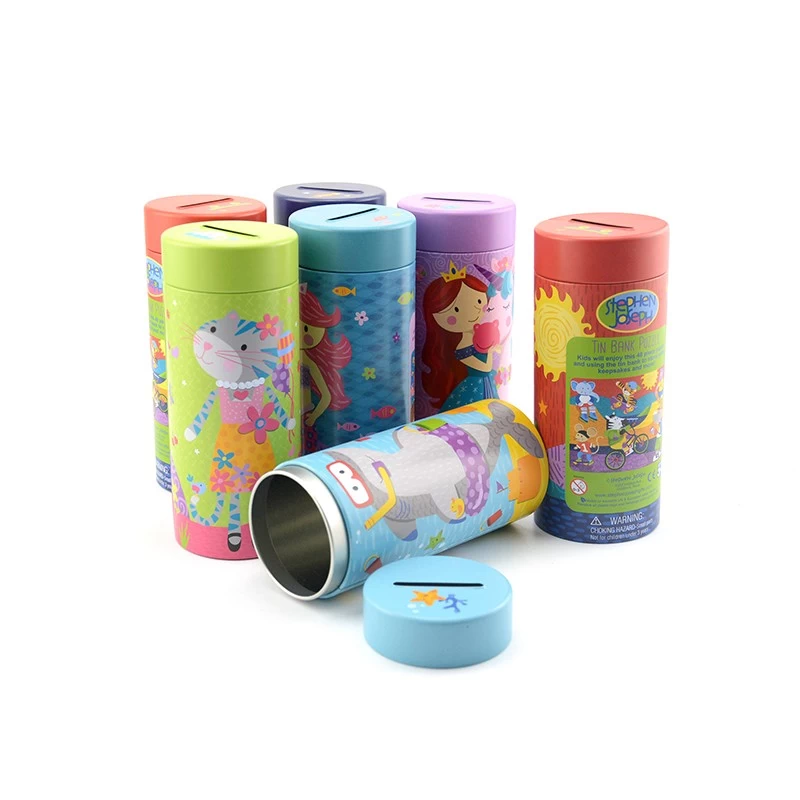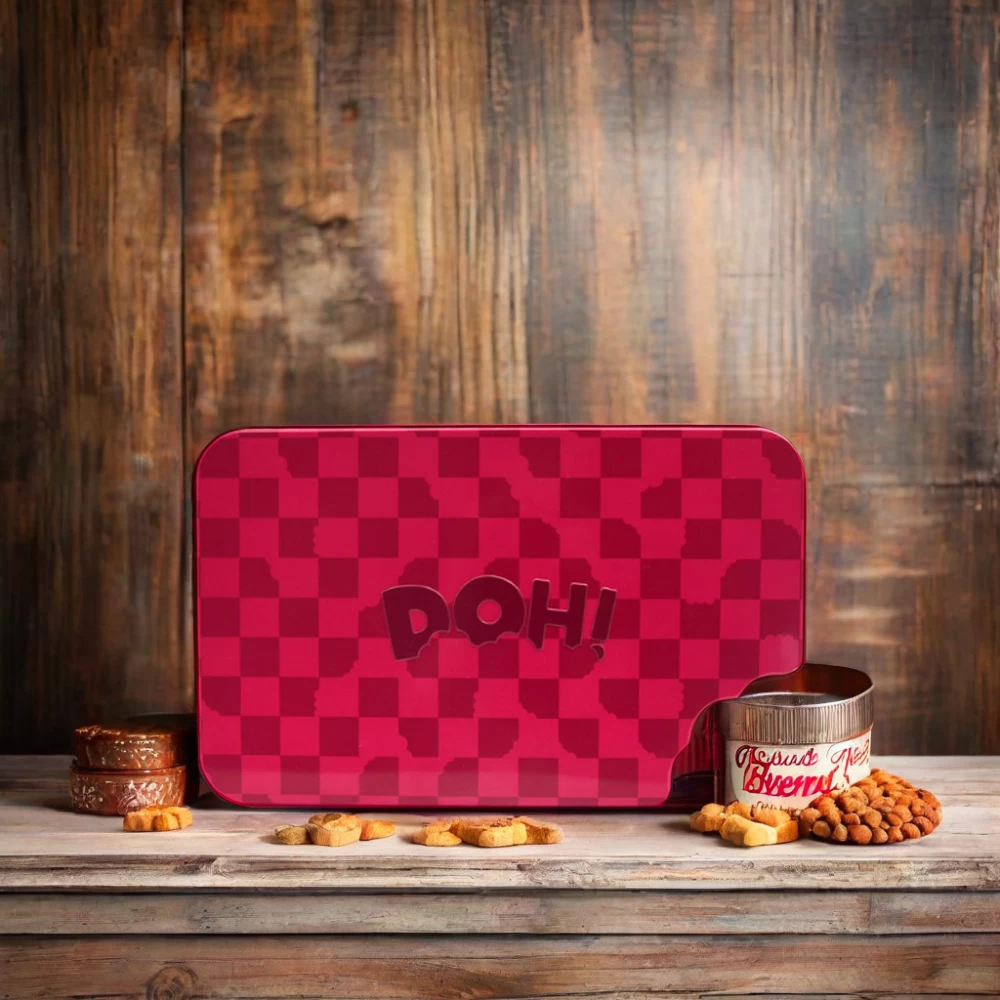This year we carefully created a PU leather handle coffee tin box for the coffee brand. The size is 185x136x85mm. It is made of food-grade tinplate and the material thickness is 0.23mm.
This year, Cosmetics Brands joined hands with our professional tin box manufacturer to create a cosmetic tin box with handle that combines beauty and practicality. This is not only a container for beautiful things, but also an ode to a refined attitude towards life.
The Xmas detachable candy balls is made of tinplate, the iron box is strong and durable. It is not easy to open directly, you can easily open the hemisphere without the string by pulling the string. The Christmas ball can be used as a candy jar, and the candy ball has enough space for candies, chocolates, trinkets, and small things. At the same time, its lovely shape and hanging ribbon are also perfect for Christmas tree decoration
Material and safety Food-grade tinplate material, light and durable, drop-proof and rust-proof, in line with food safety standards. The interior adopts environmentally friendly coating, no odor, and can directly contact food. Customized printing Full-surface high-definition printing: supports single-sided/double-sided customization of corporate logos, patterns, slogans or art designs. Process selection: silk screen printing, hot stamping, UV embossing and other processes are optional to enhance the brand texture. Applicable scenarios: employee benefits, event gifts, promotional gifts, campus customization, etc.
Our round tin cookie box is an elegant and practical packaging solution designed to keep your cookies fresh and beautifully presented. Made from high-quality tinplate, it offers excellent durability and protection against moisture and breakage. The smooth, classic round shape adds a touch of sophistication, making it perfect for gifts, festive treats, or everyday storage. With customizable designs, sizes, and finishes, this tin box not only preserves the delicious taste of your cookies but also enhances your brand’s image with eye-catching, reusable packaging.
This heart-shaped tin box is made from food-grade material, making it safe for storing a variety of candies and gifts. Perfect for the holiday season, this charming tin adds both function and holiday cheer to any celebration.
These discreet low profile rectangle tins feature a clean & fresh style that will remain modern for many uses to come. Our lightweight durable containers are made from high-quality material. Reliable hinge & seal for a perfect closure every time. General household organizing, crafts, homemade packaging, store spices, tea leaves, coffee beans, chocolates, mints, creams, balms, gels, jewelry, beads, sequins, recipe cards, arts, medicines, pills, lip balm, cosmetics, gifts, party favors, Double button locking hinged lid that offers great child resistant packaging.
Designed for exquisite chocolates, our custom food-grade rectangular chocolate tinplate boxes provide safe, beautiful and highly flexible packaging solutions. This packaging box is strictly made of high-quality tinplate materials that meet food contact safety standards (such as FDA/GB) to ensure that the contents are pure and uncontaminated. The classic rectangular design is not only simple and elegant in appearance and full of modernity, but also can efficiently utilize space, making it easy to stack, transport and retail display. The core advantage lies in its deep customization service - you can freely choose the box size, color (internal and external coating), pattern printing (high-definition color printing, hot stamping/silver, etc.), and lining material (such as food-grade white cardboard tray, PET blister tray, flannel, etc.), perfectly carrying and enhancing the value and protection of your brand chocolate. The sturdy iron box structure provides excellent sealing and moisture-proof performance, effectively extending the freshness and shelf life of chocolate, and is an ideal packaging choice for high-end chocolate brands, gift markets and baking industries.
In today's commodity market, tin box packaging has been favored by many companies and consumers for its advantages such as durability, good sealing and reusability. And exquisite tin box printing can give products a unique charm, enhance brand image and product added value. Here is a detailed guide to tin box printing for everyone.

1. Determine design requirements
Before printing tin boxes in food grade tin container factories, you must first clarify your design requirements. Consider the following aspects:
Product type: Different products have different design requirements for tin boxes. For example, food tin boxes may need to highlight the deliciousness and safety of the product, while cosmetic tin boxes focus more on fashion and high-end.
Target audience: Understand your target customer group. Their age, gender, preferences and other factors will affect the design style of the tin box.
Brand image: The design of the tin box should be consistent with the brand image and convey the brand's values and personality.
Functional requirements: Consider the purpose of the tin box, such as whether it needs to be easy to carry and easy to open.
2. Choose a design plan
After you have a clear design requirement, you can start to choose a design plan. You can get design inspiration in the following ways:
Hire a professional designer: Professional designers have rich experience and creativity and can tailor a tin box design plan for you according to your needs.
Reference competitors: Observe the tin box designs of competitors in the same industry, learn from them, and avoid duplication.
Online design platform: Use online design platforms such as Canva, Fotor, etc. to design tin boxes by yourself. These platforms provide a wealth of templates and materials, and you can easily get started even if you have no design experience.
In the design process, pay attention to the following points:
Color matching: Choose colors that are suitable for the product and brand. The colors should be bright and coordinated to attract consumers' attention.
Pattern design: The pattern should be concise, creative, and able to accurately convey product information. Illustrations, photography, graphics, and other forms can be used.
Text layout: The text should be clear and easy to read, and the font size and color should match the overall design style. Be careful to avoid too much text to avoid clutter.
Brand logo: Make sure the brand logo is prominent on the tin box for easy recognition and memory by consumers.
3. Choose printing process
There are many processes to choose from for tin box printing, and the following are common ones:
Lithography: Also known as offset printing, it is a widely used printing method. It can achieve high-quality color printing with bright colors and rich layers. Suitable for printing complex patterns and text.
Screen printing: Suitable for printing large areas of solid colors and special effects, such as metallic colors, fluorescent colors, etc. The ink layer of screen printing is thicker and has a strong texture.
Letterpress printing: It can form raised patterns and text on the surface of the tin box, with a three-dimensional sense and touch. Suitable for emphasizing brand logos and important information.
Hot stamping/hot silver stamping: The metal foil is pressed onto the surface of the tin box by heating, presenting a noble metallic luster. It is often used to highlight brand names, logos, etc.
When choosing a printing process, the following factors should be considered:
Design requirements: According to the design of the tin box, choose a printing process that can achieve the desired effect.
Cost budget: Different printing processes have different costs, so choose the appropriate process according to your budget.
Production quantity: If the production quantity is large, you can choose a printing process with a lower cost; if the production quantity is small, you can choose some special printing processes to enhance the uniqueness of the product.

4. Choose printing materials
The materials for tin box printing mainly include ink and paper.
Ink: Choose environmentally friendly, non-toxic, strong adhesion and good wear resistance ink. Different printing processes have different requirements for ink, and the appropriate ink should be selected according to the selected printing process.
Paper: If the tin box needs to be lined with paper, you can choose paper of good quality and moderate thickness. The color and texture of the paper should match the design style of the tin box.
5. Printing process control
During the printing process, the printing quality should be strictly controlled. Here are some things to note:
Color accuracy: Make sure the printed colors are consistent with the colors in the design. Color calibration can be performed by using a color management system and proofing.
Pattern clarity: The pattern should be clear and sharp, without blurring, ghosting, and other problems.
Overprint accuracy: If it is multi-color printing, ensure that the overprint accuracy is high and there is no misalignment between colors.
Printing speed and pressure: Control the printing speed and pressure to avoid problems such as uneven printing and missed printing.
6. Post-processing
After printing in the food-grade tin container factory, some post-processing can also be performed to improve the quality and aesthetics of the tin box. Common post-processing methods are:
Lamination: A thin film is applied to the surface of the tin box to increase the wear resistance, water resistance and glossiness of the tin box.
Glazing: Through glazing, the surface of the tin box can be made smoother and brighter, enhancing the visual effect of the product.
Embossing: Various textures are pressed on the surface of the tin box to increase the texture and three-dimensional sense of the tin box.

7. Quality inspection
After the tin box is printed, strict quality inspection is required. Inspection contents include:
Printing quality: Check whether the color, pattern, and text are clear and accurate, and whether there are problems such as missing printing and ghosting.
Tin box quality: Check whether the shape of the tin box is regular, whether there are deformation, scratches, etc.
Sealing: If the tin box needs to be sealed, check whether the sealing performance is good.
Only tin boxes that pass the quality inspection can be put into the market.
In short, wholesale custom printed tin boxes is a complex and delicate work, which requires careful planning and operation from multiple links such as design requirements determination, design scheme selection, printing process and material selection, printing process control, post-processing, and quality inspection. Only in this way can we produce exquisite tin box packaging, add charm to the product, and enhance the brand image and market competitiveness.